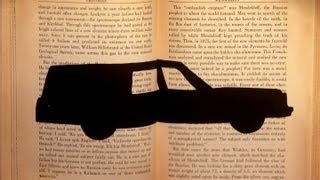(单词翻译:单击)
Mysteries of vernacular: Hearse.
通用俗语的谜团:Hearse.
The vehicle used to convey a coffin at a funeral.
Hearse是指在葬礼中用来运输棺材的汽车。
The roots of the word hearse can be traced back thousands of years to 'hirpus',
这个单词的词根可以追溯到几千年前的hirpus,
which meant wolf in the ancient Oscan language of southern Italy.
指的是在意大利南部使用的古奥斯坎语中的狼。
Hirpus when transmuted into Latin became 'hirpex', alluding to the physicality of a wolf's sharp teeth.
当hirpus转化成拉丁文后,就成了hirpex,暗指狼的锋利的牙齿。
Hirpex was the name for a large rake, a heavy triangular frame with iron teeth used to hollow the earth.
hirpex本意是指一种大耙子--一种重三角形钢架,有用来挖地的铁齿。

When hirpex became herce in Old French, the focus shifted from the teeth of the rake to its construction.
当hirpex变成古法语中的herce之后,强调的内容已经从耙子的齿转到了其本身的结构。
And the meaning of the word was simplified to frame.
而这个词的含义也简化为钢架。
In the 13th century, herce shifted to hearse in English, and referred specifically to a framework used for holding candles.
在13世纪时,herce在英语中变成了hearse,含义具体到了用来固定蜡烛的架子。
The triangular candelabra eventually found its place over coffins during funerals.
这种三角形的枝状大烛台最终出现在了葬礼的棺材上。
As funeral rites developed, so did the definition.
随着葬礼的发展,这个词的定义也随之变化。
In the 16th century, hearse refers to the support for the funeral pall, the cloth over a coffin.
在16世纪时,hearse指的是裹尸布--棺材上的一种布料--的支架。
And in the 17th century, to the bier, the stand on which the coffin stood.
而在17世纪,它指的是棺材架--支撑棺材的架子。
It eventually came to describe the horse-drawn carriage that conveyed a casket to its place of burial.
最后,它用来形容将棺材运输到其埋葬地的四轮马车。
And today, of course, it refers to that looming black shiny shape we all know so well.
而到了今天,当然,它指的就是那个我们都知道的、亮黑色的、有些阴森的东西。


